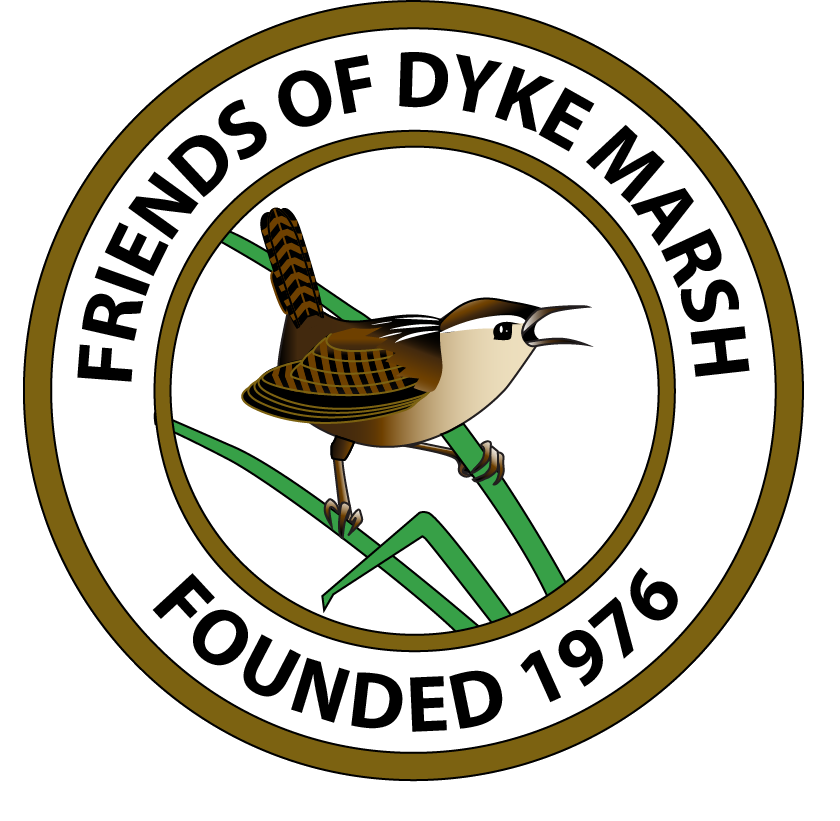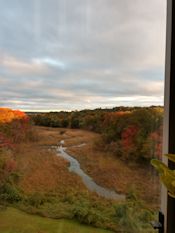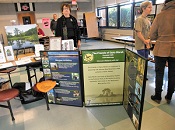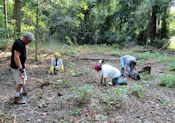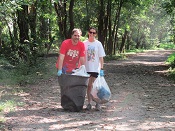Around 15 to 20 acres of Dyke Marsh stretch west of the George Washington Memorial Parkway behind the Belle Haven and River Towers Condominiums. This part of the marsh can be seen from the parkway and the condos, but it is not easily accessible to the public. Several FODMers regularly observe this part of Dyke Marsh.
News
The Friends of Dyke Marsh exhibited at Fairfax County Board of Supervisors’ Mount Vernon Supervisor Dan Storck’s Environment Expo on November 10, 2018, an event which Supervisor Storck hopes to hold again. Over 130 people attended and were inspired to become better environmental stewards in eight workshops and in watching the movie “Hometown Habitat.”
In mid-October 2018, crews from Coastal Design and Construction continue to build a breakwater in Dyke Marsh to help stop erosion and encourage sedimentation, the first stage of marsh restoration. As of October 17, 2:30 p.m., the team had installed three layers of “marine mattresses” or 1,624 units. The total final number will depend on the depth of the river bottom. A new barge load will arrive soon.
On October 4, 2018, ten dedicated FODM volunteers and National Park Service staffers put in another 400 or so plants in our native plant demonstration area along the west side of the Haul Road trail, bringing our total plantings this year to around 3,500. Despite the oppressive heat and a “healthy population” of mosquitoes, “It was a true labor of love,” said Ned Stone, FODM Vice President.
The Friends of Dyke Marsh and the National Park Service hosted 35 volunteers, ages five to unknown, who collected 50 big bags of trash for three hours along the Potomac River and Dyke Marsh shoreline during low tide on September 22.
Dr. Desiree Narango, an ecologist, gave a presentation to 70 people on September 12, 2018, explaining how native and non-native plants affect breeding bird populations, behavior and food web interactions. She worked with the Smithsonian Institution's Neighborhood Nestwatch program which focuses on breeding birds in urban/suburban backyards. Like most songbirds, Carolina chickadees are very dependent on caterpillars and other insects when raising their young. A chickadee with four to seven young, needs between 390 to 570 caterpillars every day to feed their young. Caterpillars are very dependent on certain host plants.
